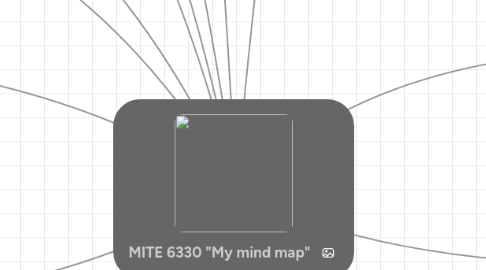
1. Instruction
1.1. Definition of instruction
1.2. Gagne's Nine Events of Instruction
1.2.1. 1. Gain Attention
1.2.2. 2. Inform Learner objectives
1.2.3. 3. Stimulate recall of prior learning
1.2.4. 4. Present stimulus material
1.2.5. 5. Providing leaner guidance
1.2.6. 6. Elicit performance
1.2.7. 7. Provide feedback
1.2.8. 8. Assess the performance
1.2.9. 9. Enhancing retention and transfer
1.3. Group Instruction
1.4. A system approach model for designing instruction
2. Summary
3. Types of learning
3.1. The process of learning
3.2. Levels of complexity in intellectual skills
4. Assessing student performance
4.1. objective-referneced tests
4.2. norm-referenced tests
5. Group Project work
5.1. Writing a project proposal
5.1.1. writing a client-scoping questionnaire
5.2. writing objectives
5.3. flow chart
5.3.1. evaluating the flow charts
5.4. storyboards
5.4.1. evaluating the story boards
5.5. developing a prototype
5.6. analysing and evaluating the prototype
5.7. combining all parts together
6. Evaluating Instruction
6.1. Formative Evaluation
6.2. Summative Evaluation
7. Interaction in online learning
7.1. twitter
7.2. facebook
7.3. blogs
7.4. forums
8. References
9. Handheld devices for learning
10. Latest news on Learning Technology Projects
11. Instructional Design
11.1. Instructional Designer
11.1.1. Examples of contexts in which an instructional designer works:
11.1.1.1. Education
11.1.1.2. Health
11.1.1.3. Finance
11.1.1.4. Government
11.1.2. Reading on Instructional Design
11.1.3. Learning technology products
12. Stages in learning technology project
12.1. Analysis
12.2. Design
12.3. Development
12.4. Implementation
12.5. Evalutaion
13. Introduction to Instructional Systems
13.1. Performance Objectives
13.2. Materials
13.2.1. Lesson Planning
13.2.1.1. 1. Classifying the lesson objectives by learning type
13.2.1.2. 2. Listing the needed instructional events
13.2.1.3. 3. Choosing a medium/materials of instruction capable of providing those events
13.2.1.4. 4. Incorporating appropriate conditions of learning into the prescriptions indicating how each event will be accomplished by the lesson
13.3. Evaluating Instruments
13.4. Stages in designing comprehensive Instructional Systems
13.4.1. System Level
13.4.1.1. Analysis of needs, goals and priorities
13.4.1.2. Analysis of resources, constraints and alternate delivery systems
13.4.1.3. Determination of scope and sequence of curriculum, courses
13.4.2. Lesson Level
13.4.2.1. Definition of performance objectives
13.4.2.2. preparing lesson plans or modules
13.4.2.3. Developing, selecting materials, media
13.4.2.4. Assessing student performance
13.4.3. System Level
13.4.3.1. Teacher preparation
13.4.3.2. Formative Evaluation
13.4.3.3. Field testing, revision
13.4.3.4. Summative evaluation
13.4.3.5. Installation and diffusion
13.4.4. Course Level
13.4.4.1. Determining course structure and sequence
13.4.4.2. analysis of course objectives
14. Defining Goals
14.1. Performance Objectives
14.1.1. Five-component guide to writing performance objectives
14.1.1.1. Situation
14.1.1.2. Learned capability
14.1.1.3. Object
14.1.1.4. Action
14.1.1.5. Tools and constraints
14.1.2. Action Verbs
